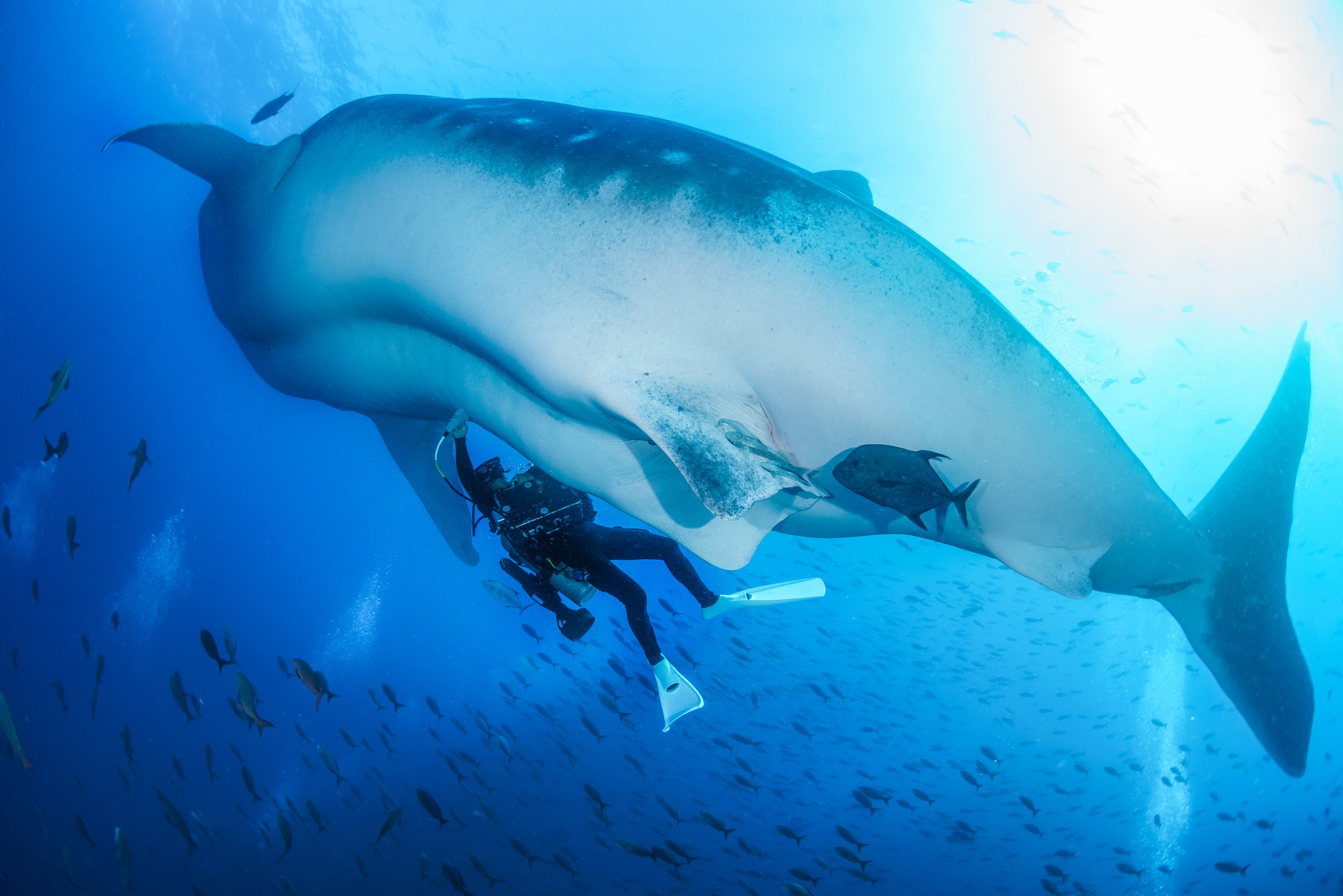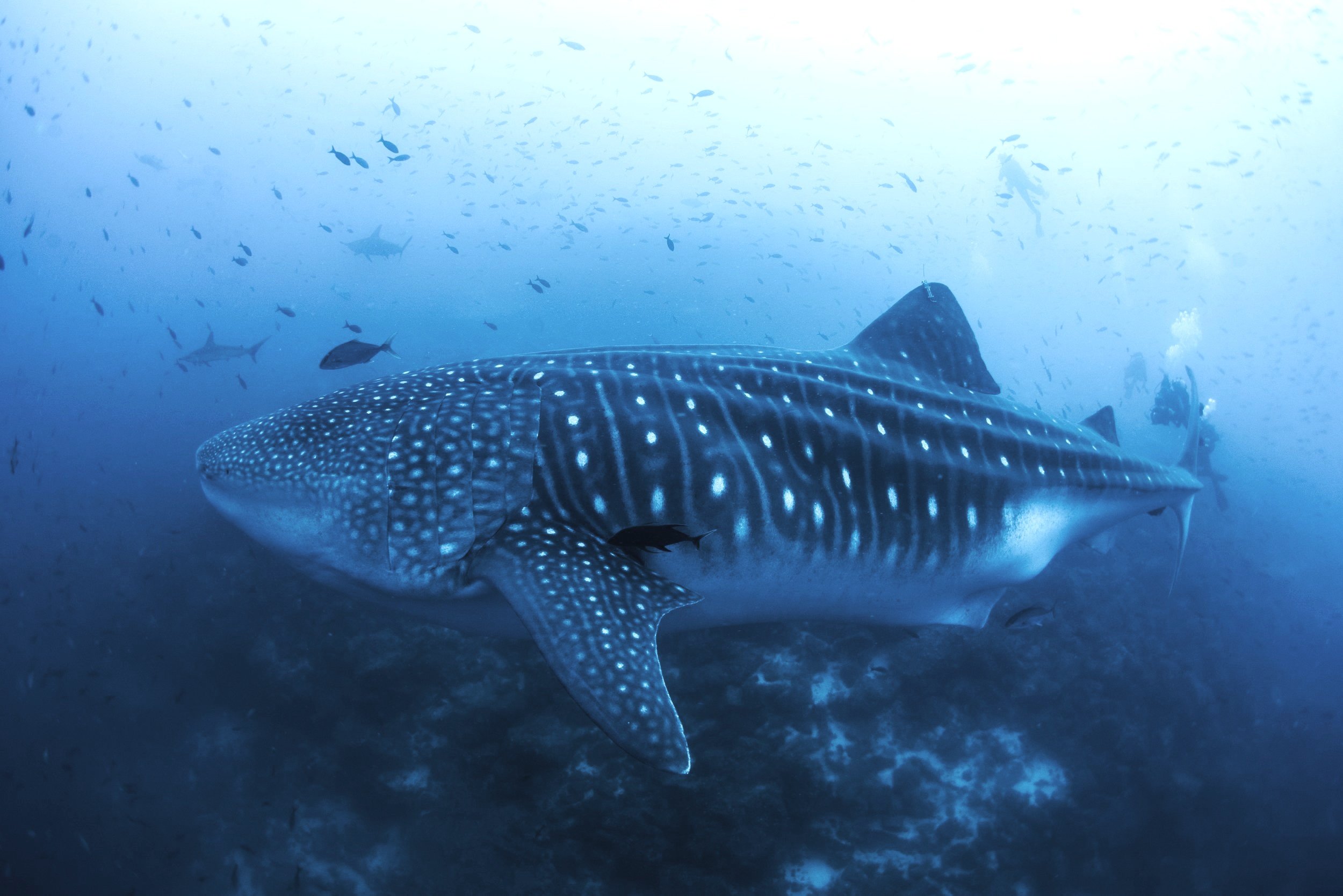Dr. Simon J. Pierce
Co-Founder / Executive Director
Google Scholar Instagram Facebook LinkedIn
simon[@]marinemegafauna.org
Overview
Simon leads the Global Whale Shark Program at MMF, and is a world expert on these iconic sharks. He led the current global conservation assessment on whale sharks for the IUCN Red List in 2016, wrote the technical proposal that upgraded the whale shark’s global protection – through an Appendix I listing on the UN Convention on Migratory Species – in 2017, and led the IUCN Green Status conservation assessment on whale sharks in 2021. Simon also co-edited the definitive scientific textbook on the species, ‘Whale Sharks: Biology, Ecology, and Conservation,’ published in 2021.
Simon has a long-standing interest in developing non-invasive research techniques for endangered species, especially photo-identification, and led the most recent global review of its application to sharks and rays. He is a scientific advisor to Sharkbook.ai, the global shark monitoring database, and is currently collaborating with the University of the Sunshine Coast and Spot A Shark in Australia to develop AI-enhanced photo-monitoring of grey nurse sharks (sandtigers) in the country. Simon regularly gives talks on photography for science and conservation with Sony New Zealand as a Digital Imaging Advocate.
Simon works within a number of regional collaborative research teams, including the Oman Whale Shark Project, Galapagos Whale Shark Project, the Madagascar Whale Shark Project, and Biopixel Ocean Foundation’s project on Great Barrier Reef whale sharks. Simon is an Oceania member of the IUCN Shark Specialist Group, and one of the founding board members of the Sawfish Conservation Society.
Within MMF, Simon works closely with Principal Scientist Dr. Chris Rohner and Senior Scientist Dr. Clare Prebble on the Global Whale Shark Program. He also sets organizational strategy with the MMF Board, Sarah Butchers (Chief Operating Officer), and MMF Country Managers, works on communications and fundraising with Madeleine Pierce, and hosts MMF’s diving trips around the world.
Education
2009 Doctor of Philosophy (PhD)
The University of Queensland. Brisbane, Australia
Biology, demography and conservation of rays in Moreton Bay, Queensland, Australia.
2001 Honours in Science (1st Class)
The University of Queensland. Brisbane, Australia
2000 Bachelor of Science (Ecology)
Victoria University of Wellington – Te Herenga Waka. Wellington, New Zealand
Biography
Simon grew up on a farm outside New Plymouth, New Zealand, where he could generally be found either climbing trees and falling out of them, or exploring rivers and falling into them. After studying Ecology for his BSc in Wellington, NZ, he moved over to Brisbane in Australia in the search for warmer water – and to study coastal rays and sharks for his doctorate.
While he was in Australia, Simon became great friends with then pre-Dr. Andrea Marshall. She convinced him to come over to check out the whale sharks in Mozambique. Together, they set up the ‘Manta Ray & Whale Shark Research Centre’ in Praia do Tofo, a precursor to MMF, in 2005. Things evolved quickly from there, as noted in the overview above.
Simon is wildlife-obsessed and, when not working internationally on MMF projects, lives in the ocean wildlife hotspot of Kaikoura, New Zealand.
Current Research
Threat prioritization in whale sharks (globally, and in the Arabian region with Dr. David Robinson).
Grey nurse shark (sandtiger) photo-identification in eastern Australia.
Join Simon in the Field
Socorro, Mexico
Raja Ampat
Media
‘Jet packs’ and ultrasounds could reveal secrets of pregnant whale sharks | ScienceNews
Uterine implants and underwater ultrasounds aim to demystify shark births | MongaBay
Galapagos Whale Sharks Undergo Ultrasounds For First Time | Forbes
How to Responsibly Interact with Marine Life | Conde Nast Traveler
Watch a Diver Perform the First Undersea Ultrasound on the World’s Biggest Shark | Washington Post
Investigating the Mysterious Whale Sharks of Mafia Island | National Geographic
Featured Research
Underwater ultrasonography and blood sampling provide the first observations of reproductive biology in free-swimming whale sharks. Matsumoto R, Murakumo K, Nozu R, et al. (2023) Endangered Species Research.
Global collision-risk hotspots of marine traffic and the world’s largest fish, the whale shark. Womersley FC, Humphries NE, Queiroz N, et al. (2022) Proceedings of the National Academy of Sciences.
The need for long-term population monitoring of the world’s largest fish. Rohner CA, Venables S, Cochran J, et al. (2022) Endangered Species Research.
Diving into the vertical dimension of elasmobranch movement ecology. Andrzejaczek S, Lucas TCD, Goodman MC, et al. (2022) Science Advances.
Vertical habitat use of black and striped marlin in the Western Indian Ocean. Rohner CA, Bealey R, Fulanda BM, Prebble CEM, Williams SM, Pierce SJ. (2022) Marine Ecology Progress Series.
Improving sightings-derived residency estimation for whale shark aggregations: A novel metric applied to a global data set. Araujo G, Agustines A, Bach SS, et al. (2022) Frontiers in Marine Science.
Residency, movement patterns, behavior and demographics of reef manta rays in Komodo National Park. Germanov ES, Pierce SJ, Marshall AD, et al. PeerJ.
Whale Sharks: Biology, Ecology, & Conservation (2021) Dove ADM & SJ Pierce (eds). CRC Press.
Rhincodon typus (Green Status assessment). Pierce SJ, Grace MK, & G Araujo (2021) The IUCN Red List of Threatened Species.
Population structure, residency, and abundance of whale sharks in the coastal waters off Nosy Be, north-western Madagascar. Diamant S, Pierce SJ, Rohner CA, et al. (2021) Aquatic Conservation: Marine and Freshwater Ecosystems.
Movement ecology of black marlin Istiompax indica in the Western Indian Ocean. Rohner CA, Bealey R, Fulanda BM, Everett JD, Richardson AJ, and SJ Pierce. (2021) Journal of Fish Biology.













MMF continues to play a key role in supporting the identification of critical marine habitats.